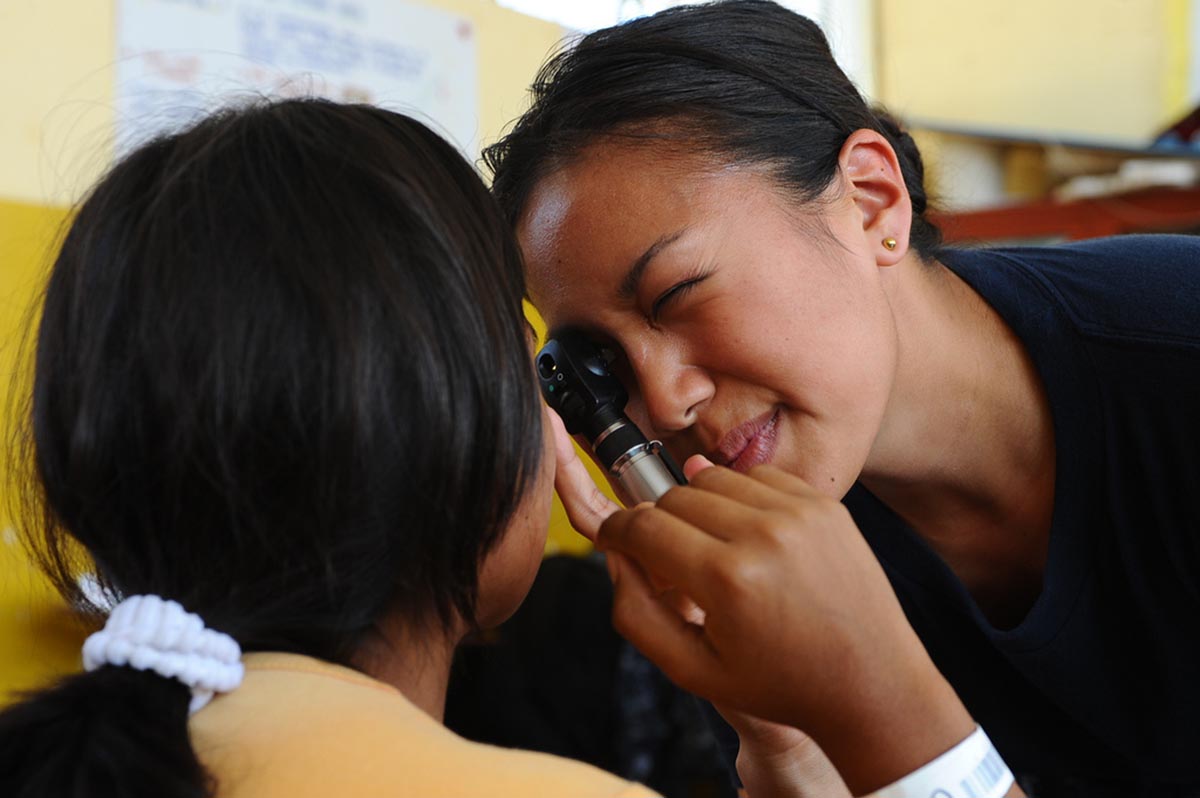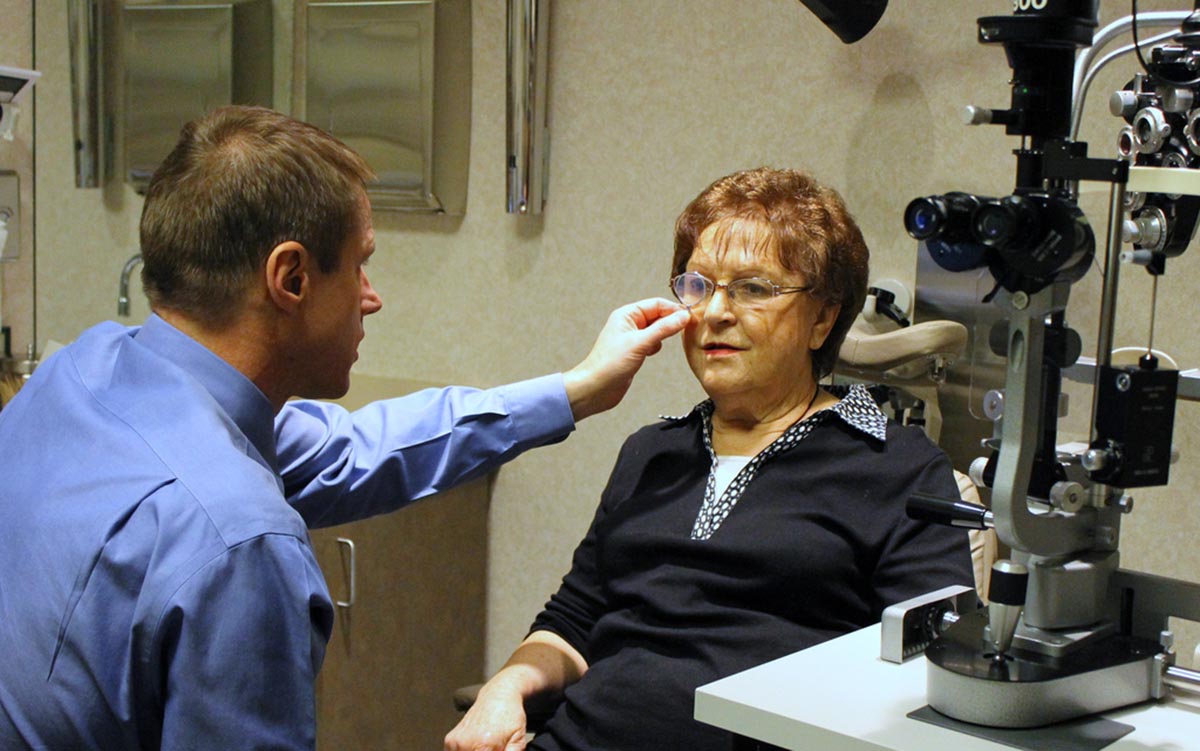Over 200,000,000 people around the world have glaucoma. About 1.5% of the world's population has the more progressive form of the disease known as open-angle glaucoma, and about 0.7% of the world's population (but 1.3% of the population of China) has the more quickly debilitating form of the disease known as closed-angle glaucoma.

Left untreated, elevated intraocular pressure (eye pressure) destroys the optic nerve and steals sight, sometimes in less than a year, more usually over several years.
There aren't really any deep, dark secrets of glaucoma treatment doctors are hiding from the patients. There just isn't enough time in most office visits to convey some essential facts about glaucoma that can save your sight. Here are a few of them.
It isn't just old people who get glaucoma.
Even if you have perfect vision now, you could have glaucoma. People of African or Chinese descent are especially susceptible to the disease, as are men, people who are nearsighted, people who use steroids (such as asthma inhalers or cortisone), diabetics, and people over 50. Chinese people are twice as likely to develop glaucoma, and African-Americans are six times as likely to develop the disease. But everyone should have an eye exam every year, more often if you have a history of glaucoma in your family. Glaucoma runs in families.
Exercise can reduce eye pressure.
The effects of exercise aren't enough to cure glaucoma, but they can reduce eye pressure enough to slow it down. Aerobic exercise such as jogging, swimming, and tennis done just 30 minutes a day 3 days a week can lower IOP up to 20%--which makes a difference. Yoga poses that require standing on your head and scuba diving are to be avoided because they put pressure on the eyes.
Pressure on the neck increases eye pressure.
Tight collars and neckties increase eye pressure and glaucoma risk.
Not everyone who has glaucoma has elevated intraocular pressure.
The fact that you don't have elevated eye pressure doesn't mean you are free from glaucoma.
Some of the 40 types of glaucoma are caused by poor circulation to the optic nerve.
See Also: Glaucoma: Tests & Diagnosis
You won't notice changes in your vision until the disease has already caused permanent damage to your optic nerve.
Glaucoma usually damages peripheral (side-to-side) vision rather than central (straight-ahead) vision, at least at first. You can't check your peripheral vision (side-to-side vision) on your own. A doctor has to conduct a field of vision test to assess your peripheral vision, as well as measure your IOP (intraocular pressure) and look at your optic nerve.
Lowering your blood pressure won't lower your eye pressure.
Blood pressure and IOP aren't tied to each other--but you should still do everything you need to do to keep your blood pressure as nearly normal as possible.
More Facts About Glaucoma Your Doctor Probably Won't Have Time To Tell You
Glaucoma testing doesn't hurt.
Tonometry, placing a pressure gauge on your eyeball to measure intraocular pressure, requires the doctor to place some drops in your eyes, but is quick (just a few seconds) and painless. A technician may measure IOP with a device that shoots air at your eye, but the tonometry touching the eye itself is more accurate.

Smoking marijuana actually isn't a good treatment for glaucoma.
The active chemical in pot lowers eye pressure by reducing blood flow to the eye. However, reducing blood flow to the eye deprives the optic nerve of oxygen and needed nutrients.
Not everyone who has glaucoma will have the same target intraocular pressure.
There is no lower level of intraocular pressure (IOP) that absolutely guarantees that there will not be glaucoma, and there is no higher level of IOP that always is associated with glaucoma.
Normal IOP is usually set at 10 to 21. One person, however, will need to have an IOP of 8 to prevent damage to the optic nerve and another will need to have an IOP of 20 to get enough oxygen to the eye. Your doctor will choose the healthiest target IOP for you.
If your medication doesn't get the desired results, your doctor will probably increase the dosage rather than put you on two different drugs.
Sticking to just one drug reduces the risk of side effects, and you are more likely to take your medication as directed if you only have to use one drug. It's important that your ophthalmologist knows all the drugs you take, as well as all the nutritional supplements.
Using eye drops successfully usually requires practice.
Most of the medications for glaucoma come in the form of eye drops. There are a few essentials for using any kind of eye drop successfully. You should wash your hands before using eye drops. This ensures that you will not transfer bacteria into your eye.
Aside from the fact that this can hurt, and injure your eye, your are also less likely to infect your eye if you don't let the dropper tip touch your eyeball.
If you take more than one kind of eye drop, wait five minutes (or less, if your doctor directs) after putting in the first drops before you put in the second drops. This keeps the second medication from washing out the first.
See Also: Eye Problems You Are Very Likely To Face When You Age
How do you put drops in your eyes?
1. Start by tilting your head back. You can be standing, sitting, or lying down.
2. Gently pull the lower lid down to form a pocket for the drops you will put in your eye.
3. Look up, and squeeze one drop of the medication into the pocket you made with your lower eyelid. Do not blink, wipe your eye, or touch the dropper against your face.
4. Close your eye and keep it closed for two or three minutes without blinking. Unless you have recently had eye surgery, you can press gently on the inside corner of your eye to keep the drops from getting into your nose and respiratory tract.
5. Blot around your eyes (don't blot your eyes themselves) to remove any excess liquid.
If shaky hands are a problem, place the drops more to the side of your eyes than the center. If you have trouble holding the bottle, wrapping it with a tissue makes it wider and easier to hold. Don't put more than one drop into your eye at a time. That's all your lid can hold.
- Gregory K. Harmon, Nancy Intrator. What Your Doctor May Not Tell You (TM) About Glaucoma. Hatchette Books, 2007.
- Photo courtesy of Official U.S. Navy Page by Flickr: www.flickr.com/photos/usnavy/5684204776
- Photo courtesy of John Jacobi by Flickr: www.flickr.com/photos/suburbaneyecare/7269957988
- www.glaucoma.org
- www.allaboutvision.com/conditions/glaucoma_news.htm


Your thoughts on this